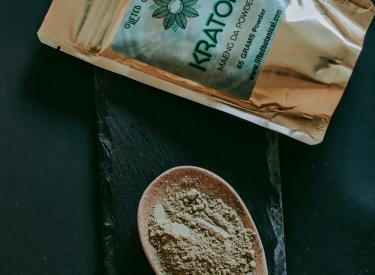
Quick Facts About Vaping
Vaping-related lung illnesses have recently been attributed to eight deaths and hundreds of hospitalizations nationwide. A potential ban on flavored e-cigarettes is forthcoming from a couple states as well as the federal government. It sounds like a crisis, but here’s a quick explainer on what’s really happening.
What is vaping?
Vaping allows you to inhale a substance as a vapor without the use of smoke or combustible elements, like standard cigarettes. Vaping devices, like e-cigarettes, use a battery to heat up a cartridge of e-liquid. This process turns the liquid into an aerosol which can be inhaled.
You can vape nicotine products. These products and vaping devices are regulated by the Food and Drug Administration.
You can also vape products containing tetrahydrocannabinol (THC), the active ingredient in marijuana. Since marijuana is not legal on a federal level, THC vape products are not regulated by the FDA.
Why do people vape nicotine?
Evidence shows vaping helps reduce health harms for people who are addicted to nicotine. By vaping instead of smoking, these folks can still satisfy cravings without the harm of combustible cigarettes. There’s also a growing body of evidence that shows vaping helps smokers quit.
However, nicotine vaping is not healthy for young people or nonsmokers. And of course, nicotine is not healthy in general. This substance puts users at risk for diabetes, heart problems, and other health complications. Nicotine is still an addictive, toxic substance, no matter how you ingest it.
What’s more, there’s been an alarming rise in teen nicotine vaping. The Surgeon General reports that between 2011 and 2015, vaping increased among middle and high schoolers by 900% before declining in 2015 and 2017. Currently more than 3.6 million U.S. youth use e-cigarettes (also known as vaping). Why such a sharp increase? There’s no one answer, but theories point to the sleek design of e-cigarettes (especially that of the popular JUUL brand), marketing practices aimed at youth in particular, and appealing vape flavors.
Why do people vape THC?
Again, it’s about ingesting a substance without the harms of smoking it. But this time, instead of nicotine, the substance is THC. There are some medical uses for marijuana, like managing cancer pain. But there are also health harms associated with marijuana use, especially recreational use.
Some states have legalized marijuana, but regulations of marijuana products vary. And since marijuana is not legal at a federal level, THC vapes are not regulated by the FDA like nicotine products are.
I heard people are dying from vaping. Is that true?
Nationally, eight deaths are being attributed to VAPI, or vaping-associated pulmonary injury: a severe lung illness. But there’s not enough evidence to support the claim that vaping is the sole cause of death in these cases. Several of the people who died also had other health issues, and much remains unknown about the long-term impact of vaping on the body.
Plus, experts have linked the instances of VAPI to illicit THC vaping devices, not to FDA-regulated nicotine vaping devices.
So if the harm is coming from THC-vapes, why is the government trying to ban flavored nicotine vapes?
The concerns over teen vaping (and the perceived allure of vape flavors) has been brewing for a long time. Given recent vaping-related health events, those concerns have been supercharged. Banning flavored vapes has been viewed as one approach to reduce teen vaping and protect the health of vaping adults.
Still, while the topic of teen vaping is an important one, there’s been plenty of misinformation and panic involved in the conversation about VAPI deaths.
Well, I like the sound of banning flavored vapes. It’ll keep my kid from doing it.
Maybe, but just because something becomes illegal doesn’t mean it goes away – it may instead become harder to regulate. For example, as a quick search online will tell you, THC vape products, including flavored cartridges, are still widely available in states where marijuana is illegal. And those illegal, unregulated products are being increasingly linked to current vape-related illness and death.
What’s more, banning all flavored vapes throws the baby out with the bathwater, according to public health experts. These experts are concerned that making nicotine vape flavors (even benign ones like mint and menthol) completely illegal will drive nicotine-addicted adults back to cigarettes, undoing public health progress.
So you’re saying vapes are great.
No! We’re saying it’s important to keep context, established research, and public health needs in mind when it comes to regulating vaping. Policy to reduce the harms of vaping should be carefully considered.
Well, then what should I do if I’m concerned about preventing my children from getting into vaping?
There are many proven ways to protect kids from the harms of vaping.
In terms of government regulation, prevention tactics should include strict enforcement of a legal buying age, careful product testing, and stringent regulation of companies that produce e-cigarettes, like JUUL. Vapes are a relatively new phenomenon. While the FDA does regulate them, there’s certainly room for improvement and innovation in their policies. Calling for better regulation makes more sense than bans.
And there are plenty of effective, community-based prevention techniques that can be applied to vaping. Just look at cigarette smoking, for example. Cigarettes are legal, but smoking among teens has dropped dramatically over the past decade, thanks to science-based prevention tactics, including community education, strong regulation, and public awareness campaigns.
For parents, the summary of the Surgeon General’s Report gives information and straightforward steps to take if you are concerned about your child vaping.
Vaping may not be the life-or-death crisis that the five o’clock news is claiming it to be, but it’s nevertheless important to keep yourself prepared with the facts.




